
The Boreal Forest
Boreal Blog Boreal.web.ca is a Manitoba Wildlands' Blog that provides links, news, publications, events, websites, and community issues about boreal and taiga forests. Boreal.web.ca is a Manitoba Wildlands' Blog that provides links, news, publications, events, websites, and community issues about boreal and taiga forests. Boreal Forests Are Important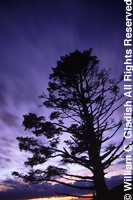 Canada's boreal forests are hugely significant on a global, national and regional/provincial basis. This significance encompasses ecological, economic and social values and services. They are part of the circumpolar ring of boreal regions in the northern hemisphere. Canada, Russia, Norway, Finland, Sweden and Alaska are all home to the world's boreal forests.
Canada's boreal forests are hugely significant on a global, national and regional/provincial basis. This significance encompasses ecological, economic and social values and services. They are part of the circumpolar ring of boreal regions in the northern hemisphere. Canada, Russia, Norway, Finland, Sweden and Alaska are all home to the world's boreal forests.From an ecological and conservation perspective, Canada's boreal is the "great lung" of North America, breathing in carbon dioxide and exhaling oxygen into the atmosphere. It stretches across the heart of Canada from coast to coast, touching every province and territory and is the single largest land based ecosystem in North America. Canada's boreal forest is also one of the few places left in the world where the ecosystems are intact, natural processes are fully functioning, and the landscape is still fundamentally shaped by natural forces like fire, wind and insects (many boreal species are specifically adapted to fire in particular). |
|||||
NRTEE Forest Regions of Canada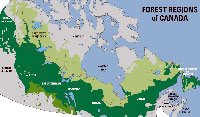 |
Canadians and Manitobans in particular love their boreal forest, including the thousands of life-giving lakes and rivers, the subtle and stunning wildlife and plant life, and the quiet, understated beauty of the sun setting over the trees. |
||||
Boreal InitiativesBoreal Species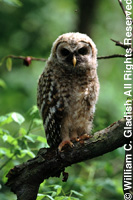 Many species are dependant upon the boreal forests in Canada. Our boreal regions are home to a host of unique species as well as being the breeding ground for migratory birds from as far away as the southern United States and Central and South America.
Many species are dependant upon the boreal forests in Canada. Our boreal regions are home to a host of unique species as well as being the breeding ground for migratory birds from as far away as the southern United States and Central and South America.For more information on the importance of boreal habitat and species in the boreal, visit:
Boreal Ecological ServicesSome of the important ecological services provided by all forests include:
Boreal Economic and Social Value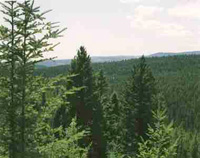 Most discussions of the economic value of forests focus on forestry and timber extraction. However, we now know that the value of maintaining Canada's boreal forests as intact and fully functioning ecosystems in fact makes more economic sense than developing these areas or extracting timber. We have always known that forests are a form of natural capital and that not only our economy, but our overall environmental health and quality of life is dependent upon a constant flow of ecological services from our forest regions. Putting a price tag on these services is a challenging task.
Most discussions of the economic value of forests focus on forestry and timber extraction. However, we now know that the value of maintaining Canada's boreal forests as intact and fully functioning ecosystems in fact makes more economic sense than developing these areas or extracting timber. We have always known that forests are a form of natural capital and that not only our economy, but our overall environmental health and quality of life is dependent upon a constant flow of ecological services from our forest regions. Putting a price tag on these services is a challenging task. According to recent research undertaken by the Pembina Institute for the Canadian Boreal Initiative, the "value of ecosystem services like water filtration and carbon storage is roughly 2.5 times greater than the net market value of forestry, hydro, mining, and oil and gas extraction in Canada's Boreal region". Source: Canadian Boreal Initiative press release

 Download Pembina Institute report for the Canadian Boreal Initiative, Counting Canada's Natural Capital: Assessing the Real Value of Canada's Ecosystem Services (PDF) Download Pembina Institute report for the Canadian Boreal Initiative, Counting Canada's Natural Capital: Assessing the Real Value of Canada's Ecosystem Services (PDF)Canada and Manitoba's boreal forests are also important for social/societal reasons. More than four million people live in Canada's Boreal Forest region; over 600 Aboriginal communities are scattered throughout our boreal and are sustained by the forest. Historically as well currently, the boreal forest and its wildlife provide food, shelter, fuel for heat and clothing for Aboriginal peoples. The diverse boreal network of plants is used for healing. However, for many Aboriginal peoples', the connection to the land and the forest goes beyond its material contributions; the Aboriginal culture and the land are inextricably linked and one depends upon the other. For those living in urban areas or away from forests, the boreal forest is a place for recreation, a place to reconnect with the land, and is critical to our overall health and sense of well-being. As Canadians, we value our forest lands and consistently show in surveys and polling that we understand the economic, social, and ecological value of our forest regions. Protecting The Boreal Forest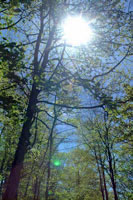 Approximately 50% of Canada's boreal forest has already been allocated to industry and at least 300 hydro dams and 60 active mines are found in the Boreal region. Thirty percent of Canada's boreal forest is within a kilometer of a road or access route. This amount of existing development is significant and the cumulative activities of oil and gas exploration, mining, large scale forest harvesting and large hydro-electric projects affects boreal regions today. Consequences for Aboriginal peoples' culture, boreal watersheds, and the flora and fauna of the Canadian boreal forest ecosystem are increasing. There is a need to balance development with conservation and protection.
Approximately 50% of Canada's boreal forest has already been allocated to industry and at least 300 hydro dams and 60 active mines are found in the Boreal region. Thirty percent of Canada's boreal forest is within a kilometer of a road or access route. This amount of existing development is significant and the cumulative activities of oil and gas exploration, mining, large scale forest harvesting and large hydro-electric projects affects boreal regions today. Consequences for Aboriginal peoples' culture, boreal watersheds, and the flora and fauna of the Canadian boreal forest ecosystem are increasing. There is a need to balance development with conservation and protection.We have noted the important economic values and the critical ecological services provided by the boreal forest to us all. The boreal also has an important role to play in climate change. For boreal forest regions to remain important biodiversity and carbon sinks, boreal forest areas must be conserved and protected from development. Boreal forests store carbon by locking it up in soils, bogs and peat. This carbon storage is perhaps the most important ecological service from the boreal, and cannot be delivered unless boreal forest regions are intact. If this carbon is released through logging, mining, road building and other development, it will accelerate the impacts of global climate instability. Boreal species need protected habitat to ensure their survival. Many boreal species travel long distances in search of food and prey, which means that protecting large habitat areas are critical for their long-term survival. The need to meet the requirements of boreal species, such as the woodland caribou, is another reason to protect large tracts of the boreal. When significant species disappear from a boreal forest ecosystem, the services, functions, and future of that boreal ecosystem all begin to decline. |
|||||
Ten Principles for Good Boreal Logging PracticesThe Forest Stewardship Council of Canada (FSC) has developed a standard for third-party certification of good logging practices in the boreal forest (dark green belt). Taiga and aspen parkland are crucial parts of the boreal ecosystem, but currently have little commercial value for logging. TO BE CERTIFIED by the Forest Stewardship Council, forestry operations must:
Forest Stewardship Council, Alternatives, Inc., Gale, Cengage Learning |
Reports - Boreal Conservation
 2002-2014
2002-2014



 (PDF)
(PDF)